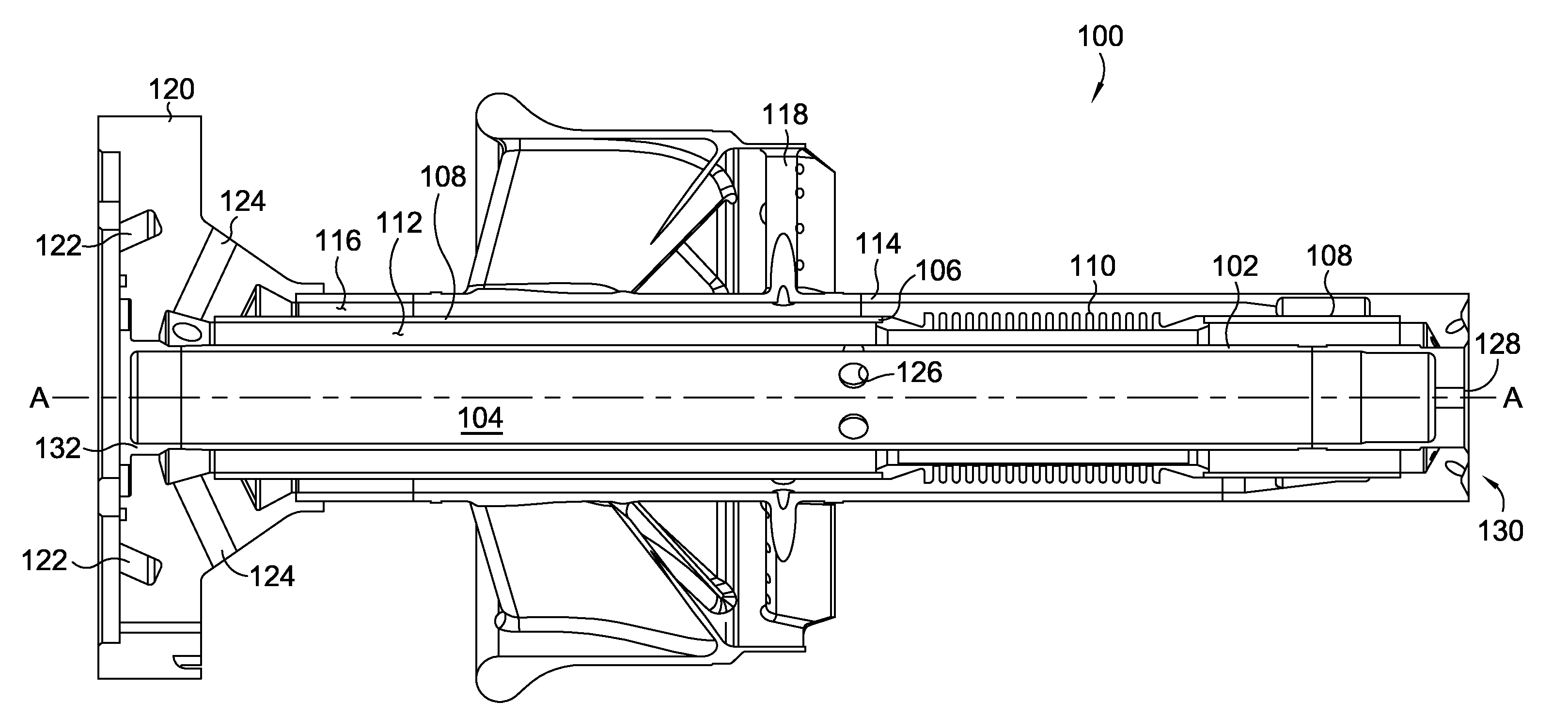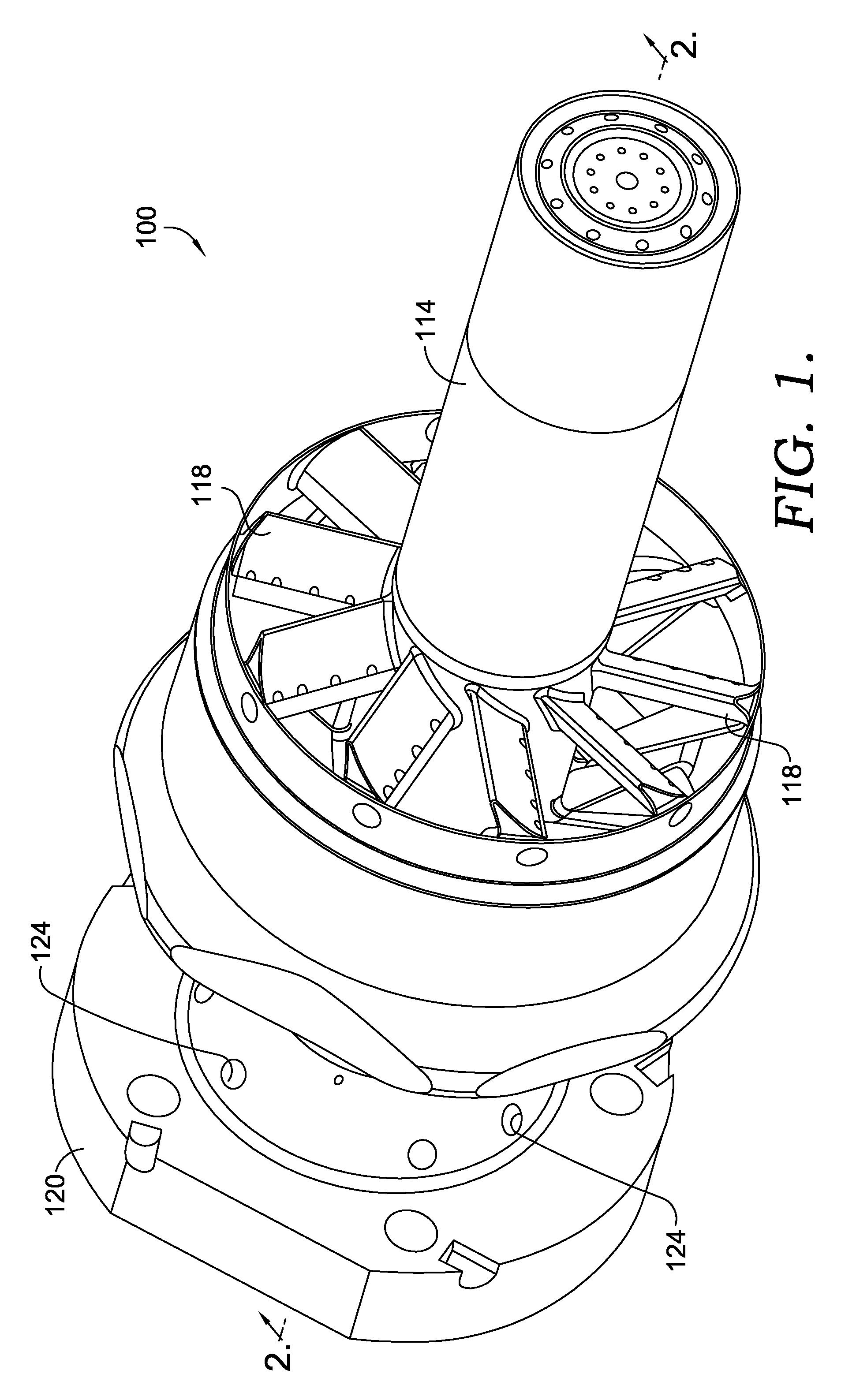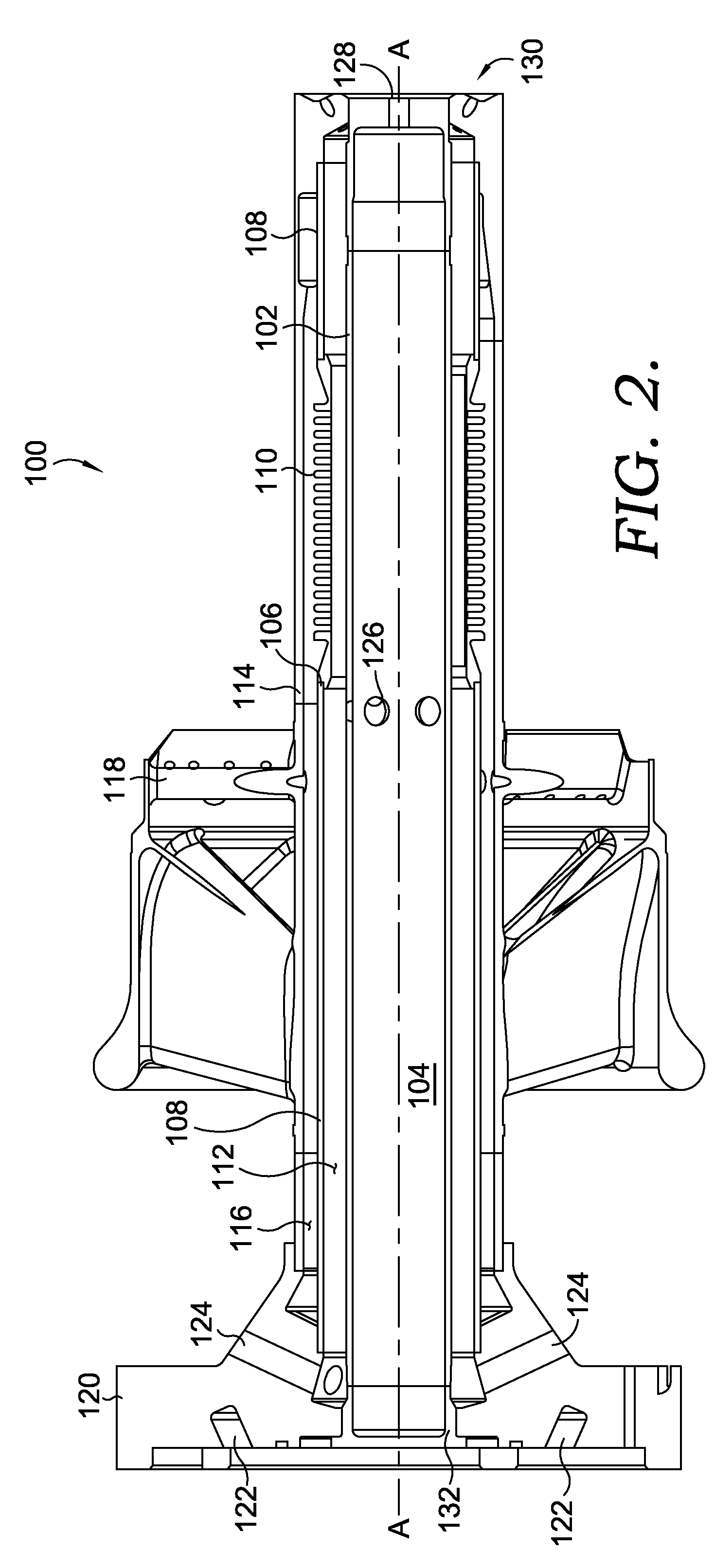Gas turbine fuel nozzle having improved thermal capability
a technology of gas turbine fuel nozzle and thermal capacity, which is applied in the direction of fuel injecting pump, machine/engine, lighting and heating apparatus, etc. it can solve the problems of affecting the overall performance and durability of the engine components, affecting the relative movement of the mating hardware relative to one, and significant wear of the combustion hardware, so as to reduce the thermal stress level of the fuel nozzle and minimize thermal growth. , the effect of reducing the differences in thermal growth
- Summary
- Abstract
- Description
- Claims
- Application Information
AI Technical Summary
Benefits of technology
Problems solved by technology
Method used
Image
Examples
Embodiment Construction
[0021]The subject matter of the present invention is described with specificity herein to meet statutory requirements. However, the description itself is not intended to limit the scope of this patent. Rather, the inventors have contemplated that the claimed subject matter might also be embodied in other ways, to include different components or combinations of components similar to the ones described in this document, in conjunction with other present or future technologies.
[0022]Referring initially to FIGS. 1 and 2, a fuel nozzle 100 having reduced thermal growth is shown. The fuel nozzle 100 comprises an inner tubular member 102 that is coaxial with a centerline A-A and has a centermost passage 104. Surrounding the inner tubular member 102 is an intermediate tubular member 106. For the embodiment depicted in FIG. 2, the intermediate tubular member 106 has cylindrical portions 108 and a corrugated bellows portion 110. The corrugated bellows portion 110, which is designed to provide...
PUM
 Login to View More
Login to View More Abstract
Description
Claims
Application Information
 Login to View More
Login to View More - R&D
- Intellectual Property
- Life Sciences
- Materials
- Tech Scout
- Unparalleled Data Quality
- Higher Quality Content
- 60% Fewer Hallucinations
Browse by: Latest US Patents, China's latest patents, Technical Efficacy Thesaurus, Application Domain, Technology Topic, Popular Technical Reports.
© 2025 PatSnap. All rights reserved.Legal|Privacy policy|Modern Slavery Act Transparency Statement|Sitemap|About US| Contact US: help@patsnap.com



